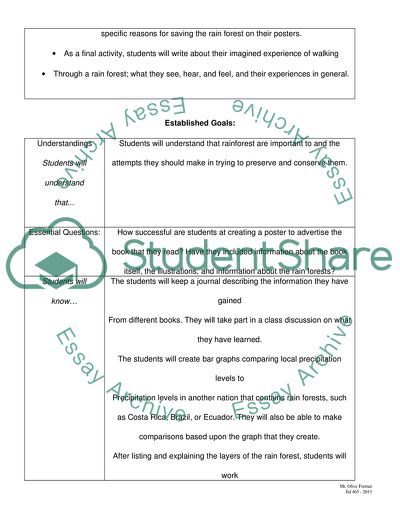Cite this document
(UbD Unit Plan Template Assignment Example | Topics and Well Written Essays - 2750 words, n.d.)
UbD Unit Plan Template Assignment Example | Topics and Well Written Essays - 2750 words. https://studentshare.org/education/1826206-rainforest-unit-lesson-plan-with-3-lessons-1-embedded-in-lesson-unit
UbD Unit Plan Template Assignment Example | Topics and Well Written Essays - 2750 words. https://studentshare.org/education/1826206-rainforest-unit-lesson-plan-with-3-lessons-1-embedded-in-lesson-unit
(UbD Unit Plan Template Assignment Example | Topics and Well Written Essays - 2750 Words)
UbD Unit Plan Template Assignment Example | Topics and Well Written Essays - 2750 Words. https://studentshare.org/education/1826206-rainforest-unit-lesson-plan-with-3-lessons-1-embedded-in-lesson-unit.
UbD Unit Plan Template Assignment Example | Topics and Well Written Essays - 2750 Words. https://studentshare.org/education/1826206-rainforest-unit-lesson-plan-with-3-lessons-1-embedded-in-lesson-unit.
“UbD Unit Plan Template Assignment Example | Topics and Well Written Essays - 2750 Words”. https://studentshare.org/education/1826206-rainforest-unit-lesson-plan-with-3-lessons-1-embedded-in-lesson-unit.


